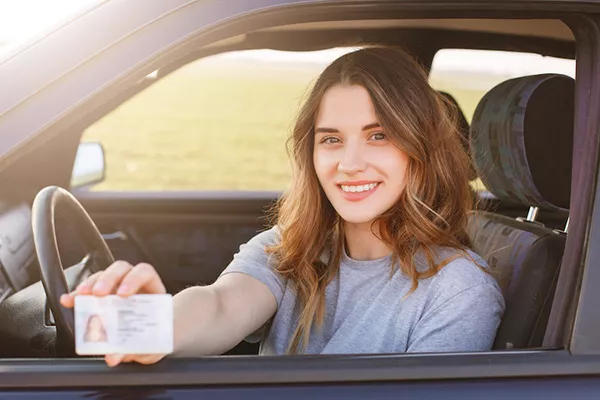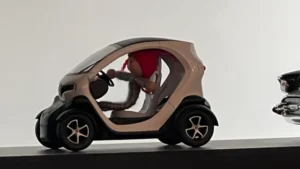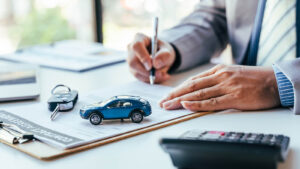Driving is a skill that offers freedom, convenience, and independence. However, not everyone has a driver’s license, whether due to age, legal restrictions, or personal circumstances. While driving without a license is generally illegal and can lead to serious consequences, there are certain situations where you can operate a vehicle legally without holding a traditional driver’s license.
This guide will explore those scenarios, providing you with clear, practical information on how to navigate them safely and within the bounds of the law.
It’s important to note that driving without a license is a sensitive topic, and the rules vary significantly depending on where you live. This guide is not meant to encourage illegal activity but rather to inform you about legal alternatives and exceptions.
Whether you’re a young person eager to learn, someone with a suspended license, or an individual exploring alternative transportation options, this article will help you understand your options and responsibilities. Let’s dive into the details.
Understanding the Basics
In most places, driving without a valid license is a criminal offense that can result in fines, vehicle impoundment, or even jail time. However, there are exceptions and alternatives that allow certain individuals to operate a vehicle legally under specific conditions.
1. Learner’s Permits: A Legal Pathway for Beginners
One of the most common ways to drive without a full license is by obtaining a learner’s permit. A learner’s permit allows individuals, typically teenagers, to practice driving under the supervision of a licensed adult.
How to Get a Learner’s Permit
- Eligibility Requirements: Most regions require you to be a certain age (often 15 or 16) and pass a written test on traffic laws and road signs.
- Supervised Driving: With a learner’s permit, you must always have a licensed driver in the car with you. This person is responsible for guiding you and ensuring your safety.
- Practice Hours: Many areas require a minimum number of practice hours before you can apply for a full license.
Benefits of a Learner’s Permit
- It provides a safe and legal way to gain driving experience.
- It helps you build confidence behind the wheel.
- It’s a stepping stone to obtaining a full driver’s license.
2. Restricted Licenses: Driving Under Special Circumstances
In some cases, individuals with suspended or revoked licenses may be eligible for a restricted license. This type of license allows limited driving privileges, such as commuting to work or school.
Eligibility for a Restricted License
- Court Approval: You may need to petition the court and demonstrate a valid need for driving privileges.
- Installation of an Ignition Interlock Device: If your license was suspended due to a DUI, you might be required to install this device, which prevents the car from starting if alcohol is detected on your breath.
- Completion of Required Programs: Depending on the reason for your suspension, you may need to complete a defensive driving course or substance abuse program.
Conditions of a Restricted License
- You can only drive during specific hours or for specific purposes.
- You must carry proof of your restricted license at all times.
- Violating the terms of your restricted license can result in further penalties.
3. Driving on Private Property: A Legal Alternative
If you need to practice driving or operate a vehicle without a license, doing so on private property is often legal. This includes places like farms, large estates, or private roads where public traffic laws do not apply.
Things to Keep in Mind
- Permission from the Property Owner: Always get explicit permission before driving on private land.
- Safety First: Even though public traffic laws may not apply, you should still follow basic safety guidelines to avoid accidents.
- Insurance Coverage: Check with your insurance provider to ensure you’re covered while driving on private property.
4. Using Low-Speed Vehicles: An Exception to the Rule
In many areas, low-speed vehicles (LSVs) such as golf carts, electric scooters, or neighborhood electric vehicles (NEVs) can be operated without a traditional driver’s license. These vehicles are typically limited to speeds of 20-25 mph and are restricted to certain roads.
Rules for Operating LSVs
- Age Requirements: Some regions allow minors to operate LSVs, while others require a minimum age.
- Road Restrictions: LSVs are usually limited to roads with speed limits of 35 mph or lower.
- Safety Equipment: Ensure your LSV is equipped with necessary safety features like headlights, seat belts, and mirrors.
5. Driving in Emergency Situations
In rare cases, driving without a license may be legally justified in an emergency. For example, if someone’s life is in danger and no licensed driver is available, you might be able to argue that driving was necessary to prevent harm.
What Constitutes an Emergency?
- A medical emergency requiring immediate transportation to a hospital.
- A situation where calling emergency services is not possible or would result in significant delay.
- Natural disasters or other life-threatening events.
Legal Considerations
- Be prepared to prove that the situation was a genuine emergency.
- Consult a legal professional if you’re unsure whether your actions were justified.
6. International Driving Permits: A Temporary Solution
If you’re visiting a foreign country, an International Driving Permit (IDP) may allow you to drive legally without obtaining a local license. An IDP is a translation of your home country’s driver’s license and is recognized in many parts of the world.
How to Obtain an IDP
- Eligibility: You must hold a valid driver’s license from your home country.
- Application Process: Apply through your local automobile association or licensing authority.
- Validity: An IDP is typically valid for one year and must be carried alongside your original license.
7. Non-Traditional Vehicles: Exploring Other Options
If obtaining a driver’s license isn’t an option, consider alternative modes of transportation that don’t require a license. These include bicycles, electric bikes, scooters, and public transit.
Benefits of Alternative Transportation
- No license or insurance is required.
- Environmentally friendly and cost-effective.
- Promotes physical activity and reduces traffic congestion.
Legal Consequences of Driving Without a License
While this guide focuses on legal ways to drive without a license, it’s crucial to understand the risks of driving illegally. Consequences can include:
- Fines and penalties.
- Vehicle impoundment.
- Increased insurance rates.
- Criminal charges and potential jail time.
Conclusion
Driving without a license is generally not advisable, but there are legal alternatives and exceptions that can help you navigate specific situations. Whether you’re learning to drive, dealing with a suspended license, or exploring alternative transportation, it’s essential to understand the rules and responsibilities that apply to you.
Always prioritize safety, follow the law, and seek professional advice if you’re unsure about your options. By doing so, you can enjoy the benefits of driving while staying on the right side of the law.




